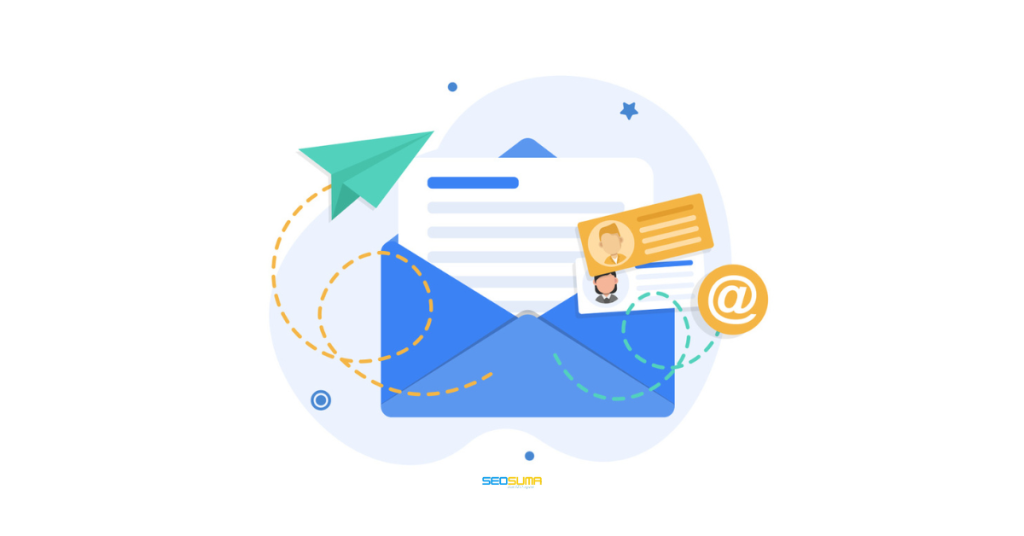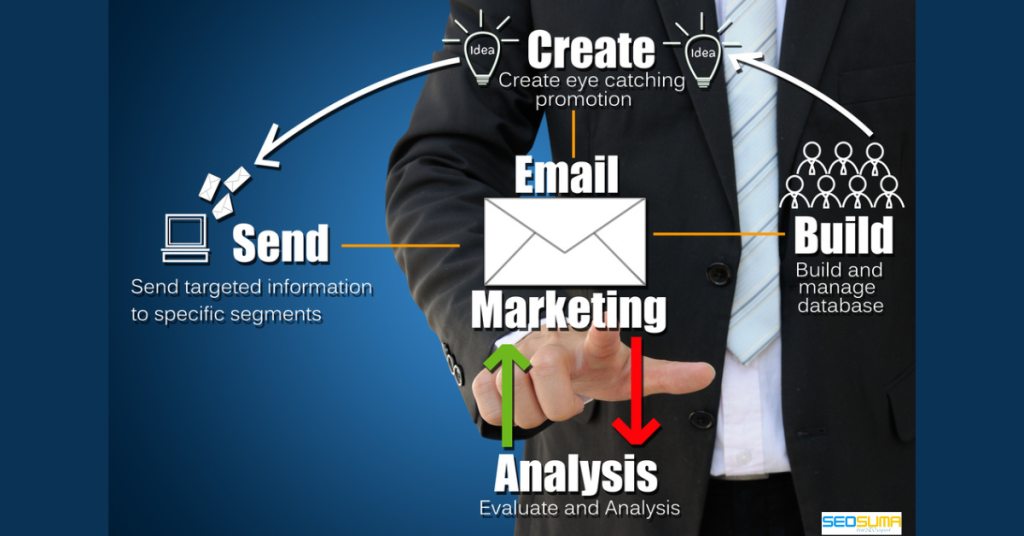
Email marketing is a digital strategy that involves sending emails to promote products or services. It helps businesses connect with audiences and drive sales.
Email marketing remains an indispensable tool for businesses seeking to enhance their digital presence, nurture leads, and bolster customer retention. This tactic allows for personalized communication, with the ability to segment messages to cater to the specific interests and behaviors of different audience groups.
By leveraging data-driven insights and crafting engaging content, companies can effectively reach out to both potential and existing customers. At its core, email marketing excels in providing a high return on investment (ROI) by combining cost-effectiveness with measurable results. Understanding the nuances of successful email campaigns, from compelling subject lines to actionable calls to action, is vital for any brand looking to thrive in the interconnected world of e-commerce and online services.
The Allure Of Email Marketing
In a world constantly buzzing with new technologies and platforms, email marketing stands strong. It’s a steadfast method that continues to thrive amidst the waves of digital change. This tried-and-true strategy builds strong relationships with customers worldwide, making it a cornerstone of digital marketing.
Why Email Endures In The Digital Age
Email is the digital lifeline that connects businesses with customers. Despite emerging platforms, email remains relevant because it is:
- Personal: Delivering tailored messages directly to individuals.
- Flexible: Adaptable content that fits various marketing strategies.
- Measurable: Easy tracking and analysis of campaign effectiveness.
- Cost-Effective: Offering high return on investment with low costs.
Impact Of High Open Rates On Campaign Success
A campaign’s success hinges on its open rates. Open rates reflect the percentage of recipients opening your emails. High open rates signal:
| What It Implies | Benefit |
|---|---|
| Engagement | More eyes on your content |
| Relevance | Content matches subscriber interests |
| Delivery Success | Emails reach the intended inboxes |
| Trust | Subscribers anticipate and welcome your emails |
Moreover, campaigns with high open rates likely see increased:
- Click-through rates
- Conversion rates
- Revenue
Therefore, focusing on strategies to maximize open rates is critical for marketing success.
Crafting Compelling Subject Lines
Email marketing thrives on the power of open rates, and subject lines bear the flag. They are gatekeepers, determining whether your email soars or sinks in the inbox sea. To turn the key, you need more than luck; you need art and psychology at play to make subscribers eager to click.
The Psychology Behind Subject Line Success
Understanding the human mind is crucial in crafting enticing subject lines. Emotions often drive our actions, even in something as simple as deciding which emails to open. Subject lines that awaken curiosity, offer benefit, or stir urgency are like magnets. They pull the reader in with an irresistible force, compelling them to discover more within the email.
- Curiosity: Tease the reader with a hint of mystery.
- Benefit: Promise value that the email fulfills.
- Urgency: Use time-sensitive language to provoke action.
Tactics To Instantly Grab Attention
Your subject line is the front-line soldier in the battle for attention. To make it stand out, you need sharp tactics. Personalization and power words can make a subject line pop, compelling subscribers to read on.
| Strategy | Description | Example |
|---|---|---|
| Personalization | Use recipient’s name or relevant data. | “John, your exclusive offer awaits!” |
| Clarity | Be clear and concise; respect the reader’s time. | “Latest Update: Your Account” |
| Power Words | Incorporate emotive, strong language. | “Unlock Your Potential Now!” |
Testing different subject lines is also key to success. Use A/B testing to gauge which style resonates more with your audience. Remember, the ultimate goal is a click, leading to an engaged reader.
Segmentation Strategies
Mastering the art of Email Marketing is more than just sending out messages – it’s about reaching the right people at the right time. Segmentation Strategies help marketers tailor their campaigns to specific groups of subscribers. By dividing the audience based on their preferences and behaviors, businesses can increase engagement and conversions.
Personalization: Beyond First Names
Personalization takes segmentation to the next level. It’s not just about inserting a first name into an email anymore. Audiences crave content that resonates with their interests and needs. By using past behavior and purchase history, businesses can create messages that speak directly to the subscriber. Here’s how:
- Craft emails based on previous interactions.
- Recommend products similar to past purchases.
- Send exclusive offers related to customer loyalty.
Using Analytics To Tailor Campaigns
Analyzing subscriber data is key to effective segmentation. Analytics tell a story about a subscriber’s journey, allowing marketers to create informed strategies.
| Metrics | Insights |
|---|---|
| Open Rates | Which subject lines grab attention? |
| Click-Through Rates | What content drives subscribers to act? |
| Conversion Rates | Which campaigns lead to sales? |
By understanding behavior through these metrics, tactics can be focused. Tailor campaigns to repeat the successes and learn from the misses. Utilize this data to:
- Segment audiences by engagement level.
- Craft messages that match subscriber interest.
- Test different approaches and refine efforts.
Timing Is Everything
Mastering email timing can skyrocket engagement. Picture your email as a key to a hidden door. The right time can unlock a trove of customer interaction. But miss the mark, and you’re just another pebble in the digital shoe. Your message deserves to be the beacon in a sea of information.
Best Days And Times To Send Emails
Emails need to arrive when recipients are most attentive. The best days are midweek, especially Tuesday through Thursday. As for time, aim for late mornings around 10 AM. Studies show that this is when people often check their inbox.
| Day of Week | Optimal Time | User Engagement |
|---|---|---|
| Monday | 8 AM | Low |
| Tuesday | 10 AM | High |
| Wednesday | 10 AM | High |
| Thursday | 10 AM | High |
| Friday | 8 AM | Medium |
Leveraging Automation For Optimal Timing
Email automation tools work wonders. They send your emails at peak times, no matter your schedule. Set your campaign in these tools and let them handle the rest.
- Scheduled emails ensure consistency.
- Automation personalizes sending times for different time zones.
- Subscriber behaviors can trigger timely follow-up emails.
For instance, tools like MailChimp or ActiveCampaign provide detailed scheduling options.
Content That Captivates
Email marketing is not just about sending emails. It’s an art. Engaging content pulls readers in and keeps them hooked. Crafting such content is the key to winning subscribers over. This section dives into creating content that’s not just read, but remembered and acted upon.
Creating Valuable And Relevant Material
Valuable content speaks directly to the reader’s needs. It’s essential to understand your audience. This understanding directs the material you create. Think ‘Is this helpful?’ or ‘Why should they care?’. Valuable content can include:
- How-to guides that solve problems
- Tips and tricks to improve daily life
- Insightful industry updates
- Exclusive offers and promotions
Such content keeps readers engaged and looking forward to your emails.
Visuals And Interactivity: Boosting Engagement
Visuals make your messages vibrant. Images, GIFs, and videos add personality. They also explain concepts faster. Interactivity takes it a step further. Surveys, polls, and games invite participation. They turn passive reading into an active experience. Consider integrating:
| Element | Purpose |
|---|---|
| Infographics | Clarify complex ideas |
| Interactive quizzes | Engage and educate |
With engaging visuals and interactive elements, your email campaigns stand out. They transform standard messages into memorable experiences.

Testing And Optimizing For Excellence
Email marketing is not a set-and-forget strategy. It thrives on continuous testing and optimization. Crafting a perfect email requires understanding what resonates with your audience. This process evolves through consistent experimentation. Hence, testing and optimizing are non-negotiable steps in the journey towards excellence in email marketing.
The Role Of A/b Testing
Wondering why some emails perform better than others? A/B testing, also known as split testing, holds the answer. It involves comparing two versions of an email. Each differs slightly in design, subject line, or content. By sending these versions to a small fraction of your audience, you can discover which one elicits a better response. The winning formula is then used for the rest of your audience.
- Variation A: Your current email design or content.
- Variation B: The new element you wish to test.
Common elements to test include:
| Element | Purpose of Test |
|---|---|
| Subject Lines | To increase open rates |
| Email Layout | To improve readability and engagement |
| Call to Action | To boost click-through rates |
Analyzing Data To Refine Email Campaigns
Once A/B testing is complete, it’s crucial to analyze the results. Data from the tests reveal what drives your subscribers’ actions. Metrics to monitor include open rates, click-through rates, and conversion rates. Analyzing these metrics shines a light on user preferences and behavior. This insight helps in refining future email campaigns.
Key steps in analyzing data:
- Review test performance data.
- Identify trends and patterns.
- Apply findings to optimize emails.
Refinement means:
- Personalizing content to speak to the reader.
- Segmenting your audience for targeted campaigns.
- Adjusting sending times for maximum reach.
Frequently Asked Questions Of Email Marketing
What Are The 4 Types Of Email Marketing?
The four types of email marketing are promotional emails, newsletters, transactional emails, and behavioral emails. Each targets subscribers with specific content to engage and convert.
How Do I Start Email Marketing?
Begin with choosing a reliable email marketing service. Next, build your email list by capturing subscribers through sign-up forms. Create compelling content and design your template. Segment your audience for targeted campaigns. Finally, test emails and analyze performance to refine strategies.
Can You Make Money With Email Marketing?
Yes, you can earn money through email marketing by promoting products, services, or content to a subscribed audience, leading to sales or commissions.
How Do I Work In Email Marketing?
To work in email marketing, build a subscriber list, create compelling content, use a reliable email platform, analyze performance metrics, and ensure compliance with spam regulations. Regularly refine strategies based on feedback and analytics for best results.
Conclusion
Navigating the landscape of email marketing can seem daunting, but its effectiveness is undeniable. By refining your strategy and embracing best practices, you can unlock the full potential of this powerful channel. Remember, building relationships through thoughtful, targeted emails will not only enhance your brand’s credibility but also drive results.
Let’s harness the power of email marketing together, one click at a time.
